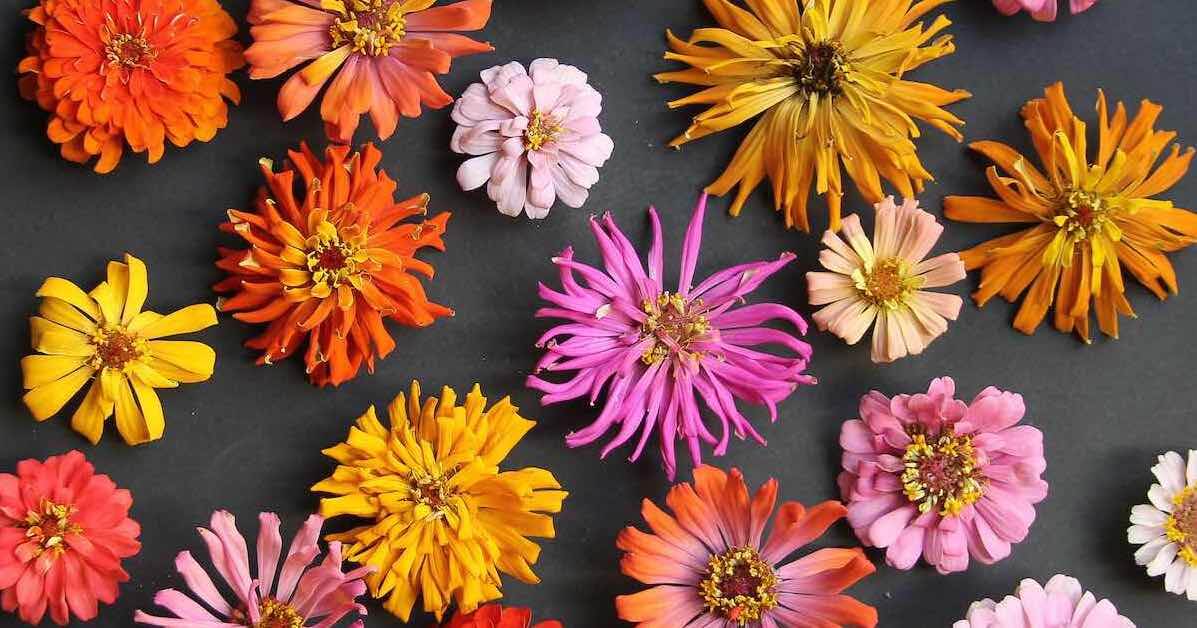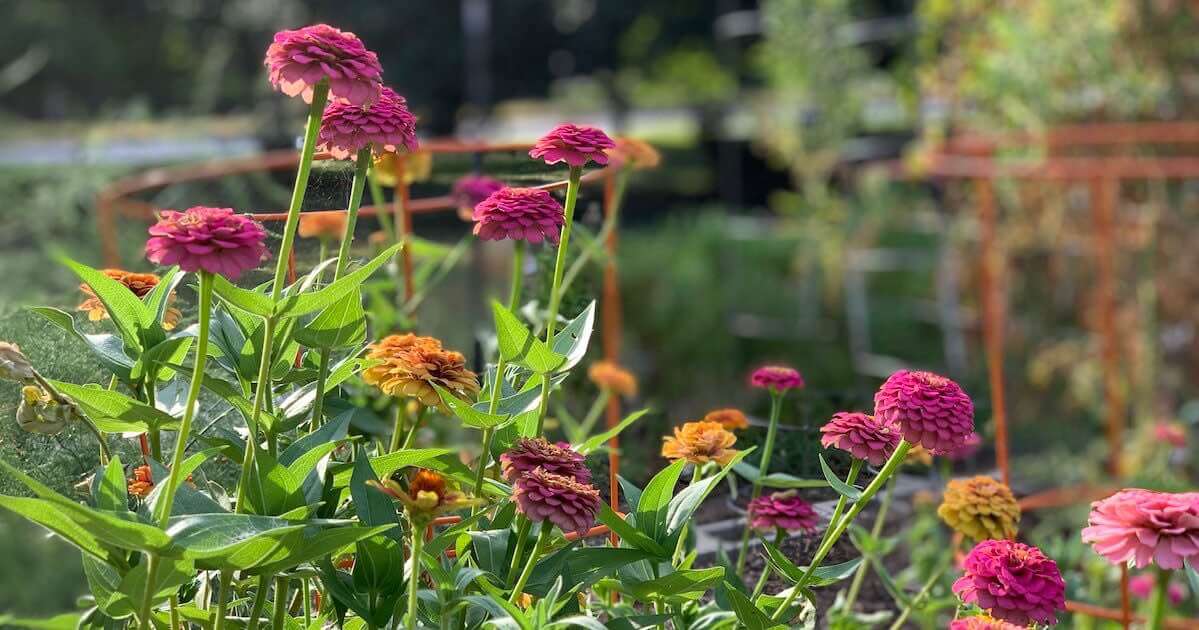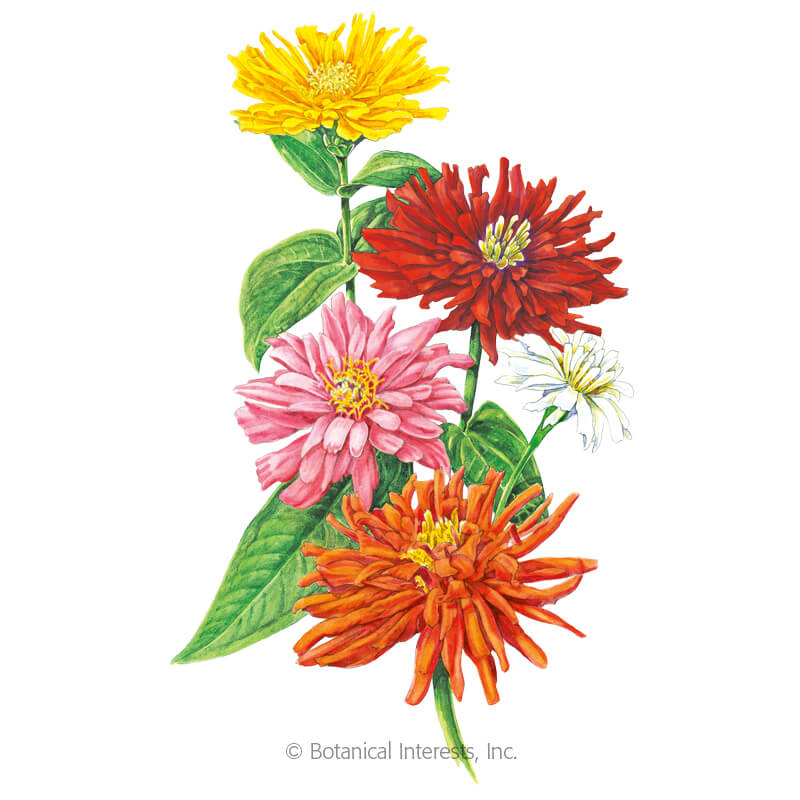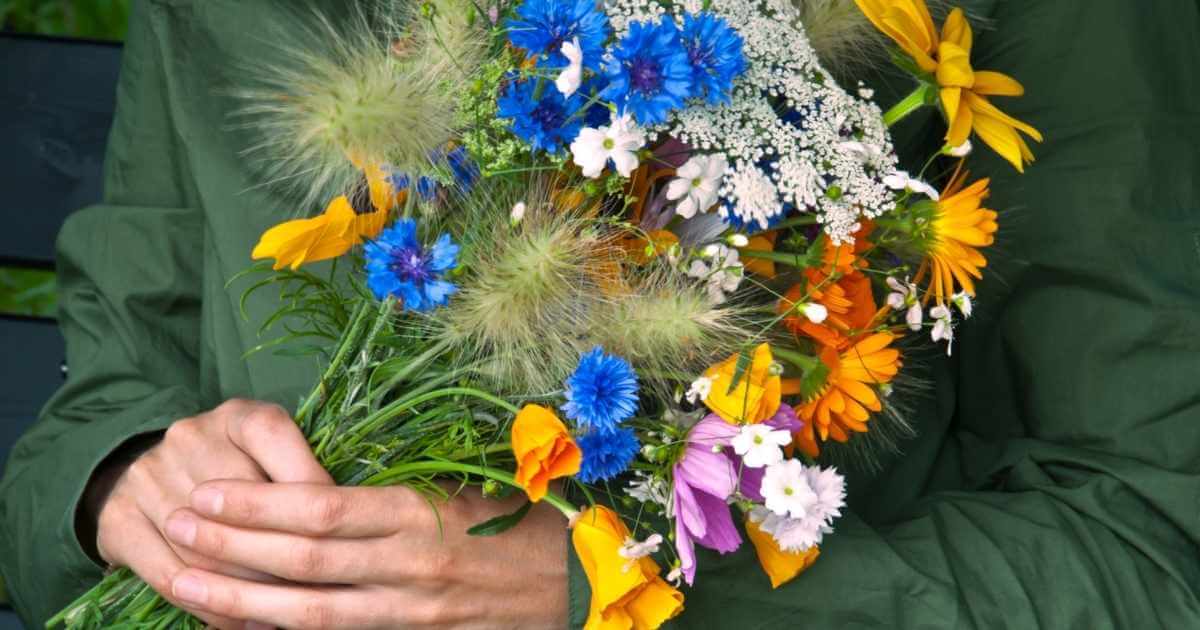
An old-fashioned garden flower,
Start zinnias by seed.
In North Texas, plant
Plant size can vary greatly. For classic cutting varieties (not compact bedding varieties), I plant each seed 12 inches apart.
Improve your soil.
Zinnias perform best in beds amended with some compost and expanded shale. Compost improves fertility, and expanded shale improves drainage. Expanded shale is available at Redenta’s and Nicholson-Hardie.

“Pinch” to encourage bushier plants.
Once your

Cut zinnia flowers frequently.
Remember: the more you cut, the more

Watch for powdery mildew.
Newer zinnia varieties resist powdery mildew, but heirloom varieties are susceptible to powdery mildew late in the season.
Use cultural practices to prevent mildew damage. Give plants plenty of space to increase air circulation. Only water in the morning, and avoid getting water on the plant leaves.

Change vase water frequently.
Zinnias are called “dirty flowers”. They quickly turn vase water into a murky mess. Change vase water daily for best results. Consider adding a floral preservative to your vase water as well.

Pick the best varieties for North Texas.
Zinnia seeds are available at most Dallas garden centers like Nicholson-Hardie, North Haven Gardens, Redenta’s and Calloway’s.
My favorite online sources for zinnia seeds are Botanical Interests, Swallowtail Seeds and Johnny’s Seeds.
The varieties that do best in North Texas are the Benary’s Giant series and Cactus types.
Double-flowered
Rolling, feathery petals are spectacular in bouquets and as garden adornments. At 4"–6" wide, this is one of the largest zinnias available! Double and semi-double blooms in brilliant shades of pink, white, red, orange, and yellow.

- Can Eating Tomatoes Help Prevent Weight Gain? New Study Says Yes - May 25, 2025
- New to Gardening? Join Our Step-by-Step Beginner Gardening Class - April 24, 2025
- Why “Intensive” Gardening is Not Good - March 9, 2025






